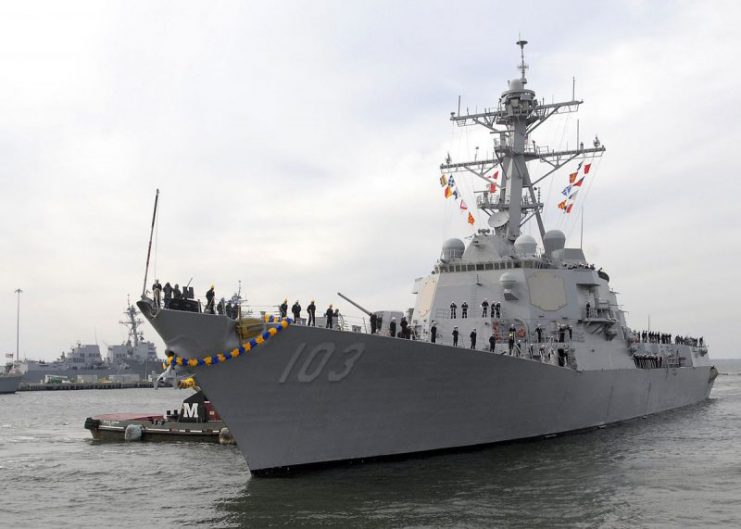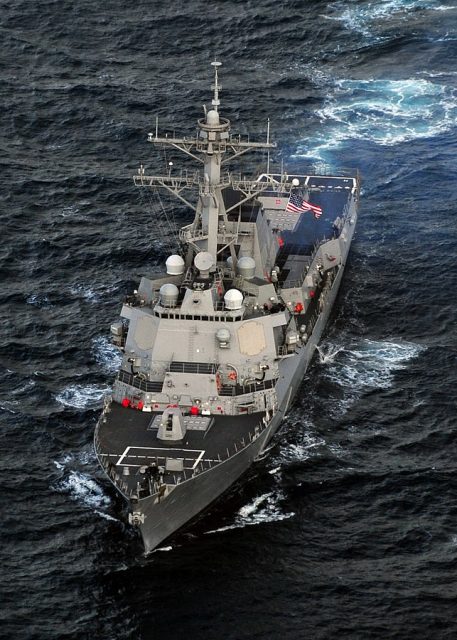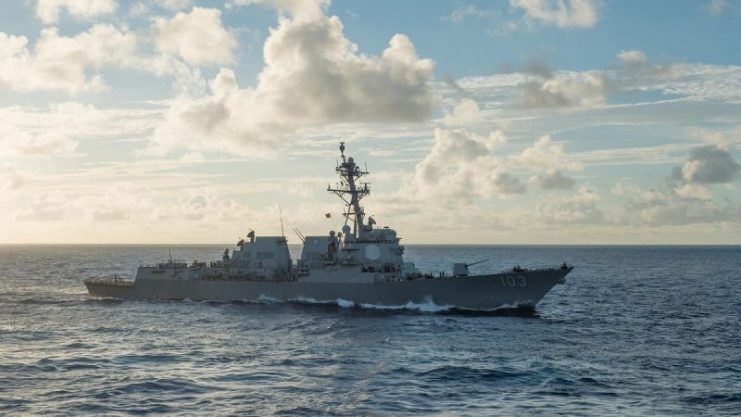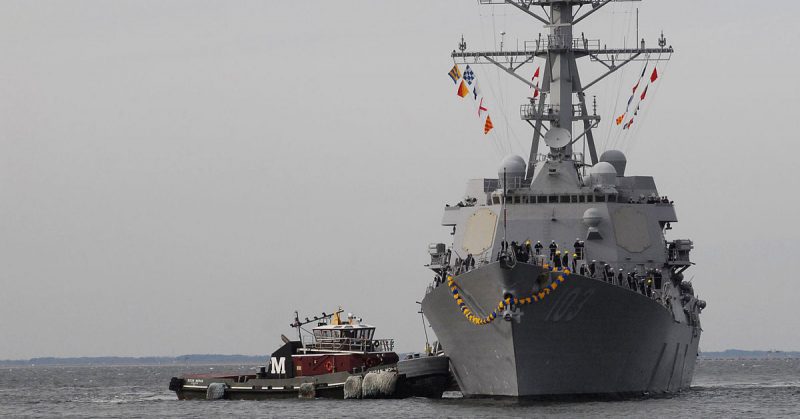The US Navy has confirmed their intention to cancel a program that would have installed fuel-efficient hybrid electric drives in 34 of their destroyers after having already installed it in one destroyer. The program initially followed the example set by Britain’s Royal Navy, which employed an equivalent scheme to drive its Type 23 Duke-class frigates.
They ran into the same problems, as the four Flight III Arleigh Burke LM-2500 gas turbines proved to be highly efficient when running at top speeds, but this decreased substantially at lower speeds.
Officially, the Navy cited ‘department priorities’ as their reason. The original program request for 2018 included $6.3 million but has since eliminated the funding in 2019. To date, the service has spent $52 million on the program.
According to the Navy’s FY2017 budget submission, the entire program was anticipated to cost approximately $356.25 million. Beyond the DDG-103, there were no further procurements or installations planned in the Future Years Defense Program. To see if the technology is a worthwhile investment, the Navy will use the USS Truxtun as a test bed.

“Installation on DDG-103 is in progress and when installation is complete, operational usage of HED on DDG-103 will be monitored and evaluated to determine the effectiveness of HED. This will inform any future decision on the fielding of HED,” said Lieutenant Lauren Chatmas.
Developed with L-3, the company awarded the contract in 2012, the program was designed to switch power to the drive shaft in order to turn the ship’s propellers from the LM2500 gas turbine motors to the ship’s electrical generators at speeds below 13 knots. That speed allows the ship to perform night steaming, ballistic missile defense or anti-submarine operations, but could not keep up with the speedy carriers.
According to a former Navy official, problems materialized as the program progressed. The first problem was the intense electrical load put on the ship through prolonged running of the drive system.

Normally, destroyers have three generators. Two generators run while the third remains in standby, rotating in when generators are not functioning due to emergency, damage or maintenance purposes. The electrical motor turned the shaft while also running the ship’s radar and related systems, the combination of which was enough to overwhelm the capacity of the generators. At that point, one of the officials said, the ship was a light-switch flipping on away from causing a ship-wide blackout. The upgrades clearly weren’t exactly as fuel efficient as they hoped it would be.
According to Bryan Clark, a retired submarine officer and analyst with the Centre for Strategic Budgetary Assessments, those issues were valid but could have been resolved through strategic engineering. The outright cancellation of the program seemed a little unnecessary to Clark, at least in terms of the technology’s potential to improve fuel efficiency in future ships and classes.

As far as Clark is concerned, if the decision was made for financial reasons, or because it’s further down on the priority list when compared to some variety of over-the-horizon anti-surface weapon, like the eight littoral combat ships they’re planning to buy in 2019, then that’s an acceptable reason.
Feasibly the Navy could return to this program later. But if it’s another science and technology or research and development program then one of the many challenges will be in determining how to be more efficient, therefore making the elimination of the project both wasteful and expensive.
There was no word on what dents this would put in the US Navy’s overall future plans for 2019, which included adding 7,500 troops, 24 F/A-18 Super Hornets, and another 86 for FYDP, boosting up their troop strength to 335,400.
